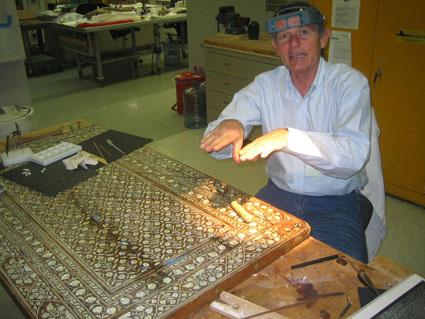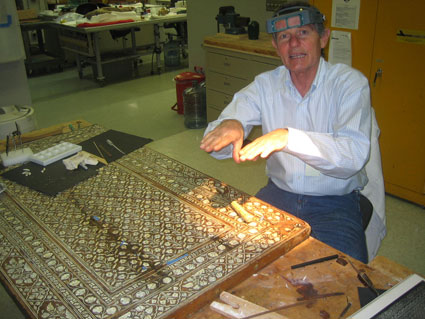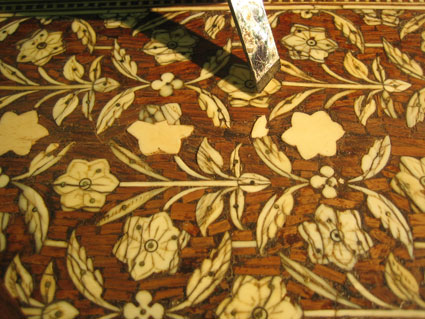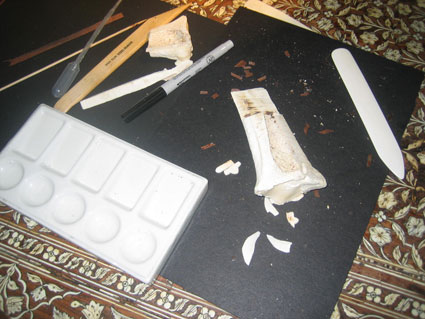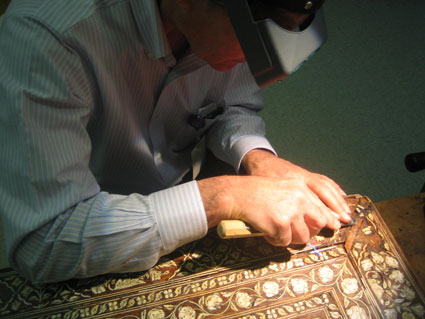The Conservation Center has got to be the most fascinating area behind the scenes at LACMA. Recently I dropped in on Don Menveg, associate conservator in the Objects Department, who was in the process of restoring a wooden panel with carved bone from eighteenth-century Mughal India that was once part of a prayer rug stand.
On this panel there are two long areas of damage (or “loss,” as they say in the conservation world) running vertically at the connection between the joints of the three wooden panels which are enclosed in a rail frame. While the foundation of solid wood appears to be inlayed with bone, it’s actually appliqué, meaning the bone is nailed into the board and then the gaps are filled with many small pieces of a decorative tropical wood.
The surface was most likely uneven and then sanded down to be smooth. The loss of the inlay probably occurred because of wood’s characteristic of expansion and contraction in response to changes in temperature and humidity. In order to repair this rather unique object, Don had to do his own experimenting with different techniques and materials before arriving at an aesthetically pleasing and chemically stable solution. He tried using various animal-based glues and natural fibers such as ground coconut shell to achieve the right color and adhesive properties he was looking for.
Don’s repairs involve many steps. He begins by using a chisel to carefully remove exposed fiber and glue from the surface of the wooden foundation where the decoration has been lost. He photographed the intact portions and then traced the pattern onto a bone folder (a thin sheet of bone used by paper conservators to fold paper). He then cuts out the bone (which has been soaked in tea to give it a more aged color) and glues it into place with an organic glue made of fish skins. He chose not to nail it down because he wants his repairs to be somewhat obvious to viewers.
The gaps between the bones are filled with very thin strips of rosewood veneer, which is glued down with a mixture of mahogany sawdust and hot rabbit-skin glue. The sawdust acts as a fibrous medium to bond the wood pieces to each other, but it also has the ability to expand and contract at a similar rate to the wood, preventing future loss of the inlay. Don prefers to use all organic materials so the additions will be in harmony with the rest of the piece.



